|
In the coming months this series “Hispanics Breaking Barriers” will
present the contributions
of Hispanics in
United States
government and leadership. Their contributions have improved not only
the local community but the country as well.
Their struggles, stories, and accomplishments will by
example, illustrate to our youth and to future generations that
everything and anything is possible.
Raul
Yzaguirre:
U. S.
Ambassador to the
Dominican Republic
(Appointed)
Román
D. Hernández, former Air Force Captain:
President
of the Hispanic National Bar Association. (Appointed)
Lawrence
G. Romo, Lieutenant Colonel USAF Reserve (Ret.):
Director of the Selective
Service System in the Selective Service System (Confirmed)
Jose
W. Fernandez:
Assistant Secretary for
Economic, Energy and Business Affairs in the State Department
(Confirmed)
Ricky
Arriola:
President’s Committee on the Arts and Humanities (Appointed)
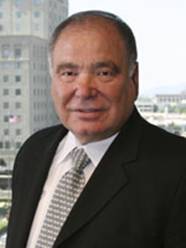
Raul
H. Yzaguirre
Raul
H. Yzaguirre has been appointed by President Obama to serve as the
Dominican Republic
Ambassador and has been accepted by the Dominican Government as new
American ambassador in the country. He is a Civil Rights activist
and currently a lifetime member of the Council on Foreign Relations, he
previously served as the president and CEO of the National Council of La
Raza (1974-2004).
Raul
Humberto Yzaguirre was born on July 22, 1939 in San Juan, Texas; the
first son of
Mexican American parents Ruben Antonio Yzaguirre, (1906-1985) and Eva
Linda Morin-Yzaguirre, (1920-1994). He is married to Audrey H. Bristow
and has five children,
Regina
, Raul Jr., Elisa, Roberto, Rebecca, and Benjamin. His family can trace
its
Texas
ancestry back to the early eighteenth century. He grew up in the Rio
Grande Valley of South Texas. His parents' desire for their son to gain
an education beyond their own high school diploma, fostered in Yzaguirre,
a drive to succeed.
By
age of 15, he was already a community organizer. His first
accomplishment was to assist on the Hispanic veterans' organization
American G.I. Forum called the American G.I. Forum Juniors.
In
1958, Yzaguirre graduated from Pharr San Juan-Alamo high school, he then
enlisted in the U.S. Air Force Medical Corps, where he served for four
years and earned certification as a registered Medical Technologist.
After
leaving the Air Force in 1962, he enrolled at the
University
of
Maryland
on the G.I. Bill, intending to begin a career in medicine. After one
year, however, he decided to transfer to
George
Washington
University
, where he became involved in student and community activism. With Dr.
Hector Garcia as his mentor, he learned from the dedicated physician,
community organizer, and civil rights activist how to accomplish his
goals.
In
1964, President Lyndon B. Johnson implemented the "Great
Society" program. Under this act, the U.S. Office of Economic
Opportunity (OEO) was established. Yzaguirre
joined the U.S. Office of Economic Opportunity. In the same year that
saw passage of the Economic Opportunity act, the 26-year old Yzaguirre
was working as a community organizer in south
Texas
. He founded the National Organization for Mexican-American Services (NOMAS)
a small nonprofit organization.
In
1968, Yzaguirre received his Bachelor of Science degree, and began his
career in Public Policy influenced from the Ford Foundation. The same
year the Southwest Council of La Raza was established. A nonpartisan,
tax-exempt organization
dedicated to reducing poverty, racial discrimination, and improving
social (economic) opportunities for Hispanic Americans.
In
1969 he founded Interstate Research Associates, a firm specializing in
Mexican-American and education-based studies that Yzaguirre built into a
highly respected
nonprofit consulting firm now based in
Washington
,
D.C.
Yzaguirre eventually served as the organization's Executive Director.
The organization grew from a regional advocacy group with 17 affiliates
to over 300 that served 41
states,
Puerto Rico, and the
District of Columbia
. He expanded membership that also included Dominicans, Argentines,
Cubans, and all other Hispanic subgroups. Eventually, other offices
opened in
Chicago
,
Los Angeles
,
Phoenix
,
Sacramento
,
San Antonio
, and
San Juan
; now it has added offices in
New York
and
Atlanta
. In 1973, he returned to
Texas
.
The
Raul Yzaguirre Policy Institute, named after him, operates out of the
University
of
Texas Pan American
. Its stated goal is,
"To inform policy, and the civic leaders who frame it, for the
benefit of the Hispanic community and the nation as a whole." The
institute primarily receives corporate and government funding,
continuing Yzaguirre's commitment to bringing corporate interests and
government interests together.
In
1977, he co-founded the National Neighborhood Coalition, and was the
first Hispanic to serve on the executive committee of the Leadership
Conference on Civil Rights.
Yzaguirre
has been honored on many occasions for his work, both in and out of the
Latino community. In 1979, Yzaguirre was the first Hispanic to receive a
Rockefeller Public Service Award for Outstanding Public Service, endowed
by John D. Rockefeller Jr. from the Trustees of Princeton University.
Yzaguirre also became one of the first Latinos to hold a fellowship at
the
Institute
of
Politics
at
Harvard
University
's John F. Kennedy School of Government.
In
1993 almost two decades later, one of the most noted honors of his
career came, when the Mexican government presented Yzaguirre with the
Order of the Aztec Eagle, the highest honor awarded by that country to
citizens of another nation. In 1998, Yzaguirre was awarded both the
Hubert H. Humphrey Civil Rights Award by the Leadership Conference on
Civil Rights, and the Charles Evan Hughes Gold Medal Award for
courageous leadership in Civic and Humanitarian Affairs by the National
Conference for Community and Justice. In 2005, the National Council of
La Raza (NCLR) headquarters building in
Washington
,
D.C.
was named after him.
In
2005, Michael Crow the President of
Arizona
State University appointed Yzaguirre to the position of Presidential
Professor of Practice in Community Development and Civil Rights.
Yzaguirre served at the North American Center of Transborder Studies (NACTS),
which has a goal of advancing teaching and research on North American
regional integration by providing a space for professionals in the
university, policy, and business communities to share information about
the region and encourage instructors to incorporate North American
content into their courses.
On
September 17, 2009, Yzaguirre was awarded with the PepsiCo Adelante ALMA
Award, which was held at Royce Hall in
Los Angeles
,
California
.
Raul
Yzaguirre has served for three decades representing the interests of his
constituents in education, immigration, and in other social policy
matters. While he
devotes his energies to improving the opportunities for Hispanic
Americans, Yzaguirre’s strongest advocacy has been in the arena of
education, which he sees as the key to strengthening the Latino family.
In honor of his efforts,
Texas
's
Tejano
Center
for Community Concerns established charter schools in
Houston
and
Brownsville
that
bear his name.
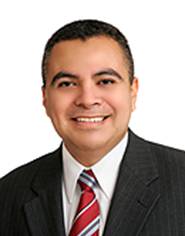
Román
D. Hernández
Román
D. Hernández HNBA President-Elect this year has been selected to serve
a one-year term as National President of the Hispanic National Bar
Association. Hernández has also served his country as a former Air
Force Captain.
Román
D. Hernández is the youngest of eight children; his parents emigrated
from
Mexico
over 50 years ago. His parents were migrant workers until they settled
in rural
Eastern Oregon
to raise their family. He worked together with his family in the fields
until he started college.
In
1999, Hernández’ law career began when he clerked at Schwab,
Williamson & Wyatt firm.
Hernández
earned a Bachelor of Science Degree from
Oregon
State
University
. Hernández
then joined the Air Force. He served nearly five years of active duty
with the United States Air Force; he completed his service to his
country with an honorable discharge at the rank of Captain. He left a
career of military service to pursue his legal education.
Hernández
earned a Juris Doctor degree from Northwestern School of Law,
Lewis & Clark
College
, in
Portland
,
Oregon
. He was admitted to Law Practice in
Oregon
and
Washington
State
Courts, Federal Courts in
Oregon
and
Washington
, and before the Ninth Circuit Court of Appeals. In 2003, Hernández
received the Portland Business Journal's "Forty under 40"
award, recognizing the most accomplished influential and civic-minded
young executives in the
Portland
area.
In
2004, Hernández served on the Transition Steering Committee for Oregon
Governor Ted Kulongoshi. It was comprised of 23 people selected from
throughout
Oregon
to assist his administration.
In
2006, Hernández was appointed by Governor Kulongoshi to the 10-member
Board of Directors for Oregon Health & Science University,
Oregon’s’ only Academic Health Center where Hernández served as
Director. He also served on the Board of Directors of the Portland
Hispanic Chamber, including serving one year as its President.
Additionally,
he was one of the founding members of the Oregon Hispanic Bar
Association and served as its first Vice-President. Part of his
responsibilities included overseeing the university’s annual budget.
Hernández was re-appointed as Director of the OHSU Board by the
governor for another three-year term.
His
strong record of civic and community involvement led local newspaper the
(Willamette Wee), identified him as one of 12 Portlanders who should run
for Mayor of Portland, Oregon. He was featured in the newspaper’s
cover story (“Done Deal”, Nov. 28, 2007). This recognition speaks to
the respect and confidence in his leadership abilities that he has
earned with his local community.
Hernández’
law practice focused on the defense of employers against claims filed by
former, current, and prospective employees for allegations of
discrimination, harassment, in both state and federal courts, including
class action litigation. He also provided general employment and labor
advice to employers of all sizes related to employment and labor
policies and practices.
Hernandez
has also been involved in international business matters and has
conducted cross-border contract negotiations on behalf of firm clients.
"This
is an extraordinary opportunity for Román to further his work in the
legal community," said Mark Long, managing partner for Schwabe.”
"For more than 30 years the HNBA has worked hard to promote
positive change within the legal profession and we are proud that Román
will now be a championing voice.”
"I
am truly honored to serve as HNBA President-Elect this year, then as
HNBA President next year. The HNBA, the national voice of the Hispanic
legal community, will continue to advance the interests of Hispanic
legal professionals on a national level under my leadership as it has
under the leadership of many great leaders who have preceded me, like
Ramona Romero. I look forward to working
with her and other members of the HNBA Board of Governors," said
Román Hernández.
The
HNBA is a nonprofit national membership organization that represents the
interests of the more than 100,000 attorneys, judges, law professors,
legal assistants and law students of Hispanic descent in the
United States
and Puerto Rico.
The HNBA promotes opportunities for Latinos in the legal profession
through advocacy and substantive programs.
In
2005, the Hispanic National Bar Association selected Hernández out of
the 19 regional presidents across the country as “Regional President
of the Year,” and in 2009, he was selected by “Latino Leaders”
magazine, as one of the top 101 Most Influential Hispanic Leaders in the
U.S.
In addition, “Hispanic Business” magazine also selected Hernández
as one of the 100 Most Influential people in the nation.
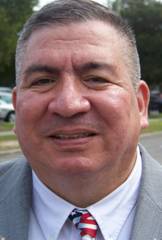
Lawrence
G. Romo
Lawrence
G. Romo, Lieutenant Colonel USAFR (Ret),
confirmed by both, the Senate Armed Services
Committee and the entire Senate to serve
as Director of the Selective Service System in the Selective Service
System. He was the current Soldier and Family Assistance Program Manager
for the U.S. Army 5th Recruiting Brigade in
San Antonio
,
Texas
.
Lawrence
Guzman Romo was born in
San Antonio
,
Texas
. He is the son of Jose Villapando Romo and Mary Louise Guzman-Romo;
both parents are
Texas
’ natives. He was the first child to graduate from college. He is
married to Birgit-Haase-Romo.
Romo
earned a Bachelor of Science degree from the Air Force Academy and a
Master of Education degree from Montana State University-Northern
(formerly Northern Montana College).
Romo
served on active duty and in the reserve, He served as a USAF Academy
Admissions advisor, supporting the operation of the Minuteman Missile
Weapon and Launch System, in Training Operations, an as an Air
Transportation Officer.
He
joined the Federal Civil Service (1987-1992) as an item Manager for the
directorate of special Weapons and from (1992-1999) Romo was the
Transition assistance Program Specialist at Kelly air Force Base in
aiding military personnel as the transitioned into the civilian Job
market.
Upon
retiring from the U.S. Air Force Reserve, Romo served as an Admissions
Liaison Officer for the United States Air Force Academy, having
performed his function for 29 years as both an additional and primary
military duty.
Romo
also served as Chairman of Bexar county Veterans Committee and member of
the American Legion, American GI Forum, Association of United States
Army and the Military Officers Association of America.
U.S.
Congressman Ciro D. Rodriguez (TX-23) stated, “Larry Romo has served
our country with distinction, both in the armed Forces and in the
broader community. His broad experience with the military gives him keen
insight into this important issued and I am confident he can take on
this role with honor, passion and professionalism.”
Congressman
Charles A. Gonzalez (TX-20) stated, “I am always pleased to see
talented folks from
San Antonio
assume high-level government positions in
Washington
and one could be more deserving than Mr. Romo. He has dedicated most of
his impressive career to meeting the needs of the men and women in our
Armed Forces as well as our veterans who come home after their service.
His commitment to the military and veterans community makes him an ideal
choice to serve as our nation’s Selective Service Director, and I
wholeheartedly support his nomination.”
Congressman
Henry Cuellar (TX-28) stated, “I am confident in Mr. Romo’s ability
to serve in this new role with the dedication he’s shown in the past.
I congratulate
him
on this presidential nomination, and commend him for heeding the call
and continuing to serve.”
“I
am honored and humbled by the nomination I look forward to working with
Congress, the Administration and the American people as we work to have
the Selective service in place and ready in the event of a national
emergency,” stated Romo.
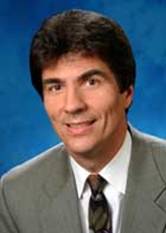
Jose W. Fernandez
Jose
W. Fernandez served as a partner in the
New York
office of Latham & Watkins, and Global Chair of the firm's
Latin America
practice, he has been confirmed by the Senate to serve as Assistant
Secretary for Economic, Energy and Business Affairs in the State
Department.
Jose
Walfredo Fernandez was born in
Cuba
; he grew up in a small town in southern
Cuba
, next to the
Bay of Pigs
. His father was one of a handful of lawyers in town. His early memories
are about family friends who would suddenly vanish either to firing
squads or to
Miami
,
Florida
. His family left
Cuba
in 1967 to settle in
Hudson
County
in
New Jersey
, where his mother took a job as a seamstress in a local factory.
Enrolling
in college in 1973 and eventually Fernandez became a writer for the
student’s college newspaper and served on the Student Committee on
Student Life. Fernandez graduated magna cum laude with high honors from
Hanover
,
New Hampshire
. He earned a Bachelor degree in History. He then moved to
New York
to pursue his Juris Degree in Law from
Columbia
Law
School
, where he received the Charles Evans Hughes Prize and a Parker School
Certificate of International Law with Honors. He was encouraged by
professors and administrators from the university, who convinced him
that a career in international law was of within his reach.
In
1980, he thought that he would benefit if he could see what it was like
to do business from the perspective of countries on the receiving end of
investments, rather than from Wall Street, so he decided to work for a
local firm in
Spain
.
Eventually
Fernandez returned to
U.S.
He began his
U.S.
law career at the prestigious firm O’Melveny & Myers’
New York
office. Fernandez led the international practice group, working on
several Latin American issues, including the privatization of the
Ecuadorian telecommunications business.
In
2006, Fernandez joined Latham & Watkins law firm as a partner.
Pasquarelli, Adrianne, “Executive Moves,” Crain’s New York
Business. In July 3, 2006, Fernandez began his international experience
and chaired the firm’s Latin American practice. He speaks Spanish,
Portuguese and French.
Fernandez
a lifelong supporter of education, the arts and commercial engagement,
Fernandez has served on the Board of Trustees of Dartmouth College and
on the Board of Directors of Accion International and the Council of the
Americas
. He has been Chair both on the American Bar Association's
Inter-American Law Committee, the Committee on Inter-American Affairs of
the Association of the Bar of the City of New York, co-chair of the
Cross Border M&A and Joint Ventures Committee of the New York State
Bar Association. He recently headed the Latin American and Caribbean
division of the
ABA
's Rule of Law Initiative. He has also served on the boards of National
Public Radio-station WBGO-FM, Ballet Hispanico of New York and the
Middle East Institute. He was a co-founder of TeatroStageFest, a 2-week
Latino theater festival in
New York City
, and he served as an appointed Commissioner of New York's Latin Media
and Entertainment Commission.
Fernandez
sat on the Council on Foreign Relations (CFR) with Maria Otero, who is
now the current Under Secretary for Democracy and Global Affairs. He
also served with ACCION board former President Otero. He sat on several
CFR panels with R. Rand Beers, under secretary for National Protection
and programs at the Department of Homeland Security.
Fernandez
was named one of the "World's Leading Lawyers" by Chambers
Global for his M&A and corporate expertise, an "Expert" in
International Financial Law Review's "Guide to the World's Leading
Project Finance Lawyers," and one of the "World's Leading
Privatization Lawyers" by Euromoney Publications. Fernandez is
recognized as a leading corporate finance attorney and leading Latin
American attorney in the Latin American market in the Chambers Global
2008 legal guide. He was also featured by “Hispanic Business
Magazine” in its "100 Influential’s List" for 2006 and
2007.
During
his three decades in law, Fernandez has addressed some of the most
challenging legal issues in
Latin America
. He has handled complex acquisitions
for
corporations and private equity firms and has advised on financings and
privatizations, among other issues.
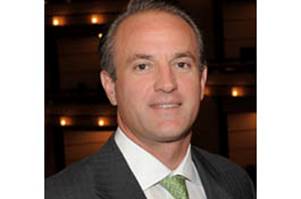
Ricky
Arriola
Ricky
Arriola President and CEO of Inklet Direct, a leading outsource provider
of direct marketing service has been appointed by President Obama to
serve in the President’s Committee on the Arts and Humanities.
Ricky
Arriola was born in
Florida
; He is the son of Joseph Ricardo and Lourdes Arriola. He is single and
looks forward to be married some day.
Arriola
earned a Bachelors of Arts degree at
Boston
College
, a Masters of Business Administration from Harvard University Graduate
School of Business, and a Juris degree from
St. John’s
University
school
of
Law
. He also holds the distinction of being an Aspen Institute Henry Crown
Fellow. This Program recognizes entrepreneurial young executives and
professionals under 45 who have achieved considerable success in their
fields.
Arriola’s
passion for his community inspired him to serve as Chairman of the Board
of Directors of the
Adrienne
Arsht
Center
for the Performing Arts. The
Adrienne
Arsht
Center
is the third-largest performing arts center in the
United States
, which opened in 2006. Arriola has been a driving force in the
Adrienne
Arsht
Center
’s emergence as one of the nation’s leading performing arts
organizations. "Ricky
Arriola is one of the
Adrienne
Arsht
Center
's most valuable assets," said M. John Richard, President and CEO
of the
Adrienne
Arsht
Center
, in the statement.
Arriola
is also actively involved in many other organizations such the Greater
Miami Convention, Visitors Bureau, the Orange Bowl Committee, and
Leadership
Florida
.
He also serves as a mentor through the Big Brothers Big Sisters program.
Although involved in many organizations and charities. Arriola still
finds the time to devote to competing in running marathons and other
races across the country.
He
served as a member of the National Finance Committee of President
Obama's election campaign and past Chairman of the Young President's Organization
of
Miami
. Arriola has been recognized as one of the "23 under 40"
shaping
South Florida
by “Poder Enterprise Magazine.”
Arriola
as a member of the presidential committee will be involved in helping
create the nation's preeminent body focused on arts and humanities
education, cultural diplomacy and economic revitalization through the
arts and humanities. It serves as a liaison between The White House and
federal cultural agencies, as well as civic, corporate, foundation, and
private funders that seek to further the nation's investment in the arts
and humanities. The 26-person panel is a veritable “who’s who” of
the nation’s cultural landscape. First Lady Michelle Obama serves as
the Committee’s Honorary Chair.
“I
am confident that these talented individuals will be valued additions to
our administration and will offer wise counsel in their respective
roles, I look forward to working with them in the coming months and
years,” stated President Obama.
The
President's Committee on the Arts and Humanities has served every
president since 1982. Achievements include the origination of the
Presidential Medals in the arts and humanities; groundbreaking cultural
delegations to China and Mexico; and the creation of signature programs,
such as "Save America's Treasures," the American Film
Institute's "Project: 20/20," and the "Coming Up
Taller" awards, which recognize exemplary after school arts and
humanities programs for the nation's youth.
|
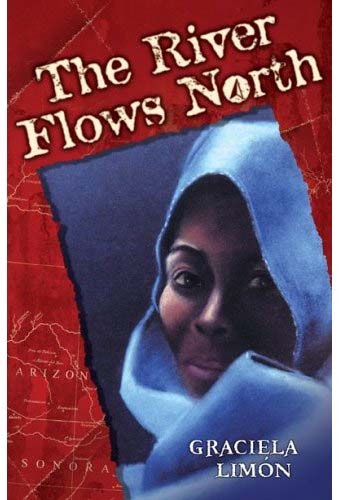 ''There
is a pathway traveled by migrants that cuts away from the Mexican
border as it slithers north through the Arizona desert up to
Interstate 8. Migrants know this highway as la Ocho, the road
that takes them to a better life, but the trail that leads to that
highway is ruthless and unforgiving.''
''There
is a pathway traveled by migrants that cuts away from the Mexican
border as it slithers north through the Arizona desert up to
Interstate 8. Migrants know this highway as la Ocho, the road
that takes them to a better life, but the trail that leads to that
highway is ruthless and unforgiving.''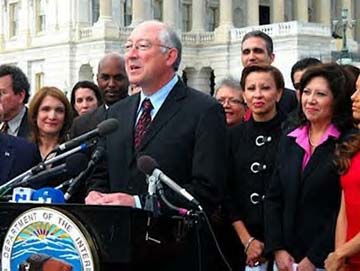
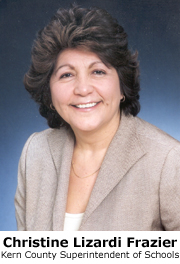





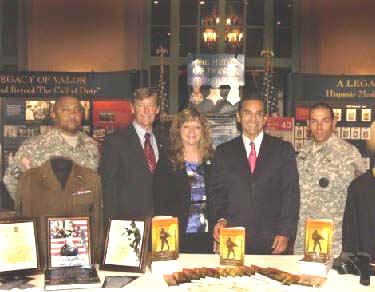
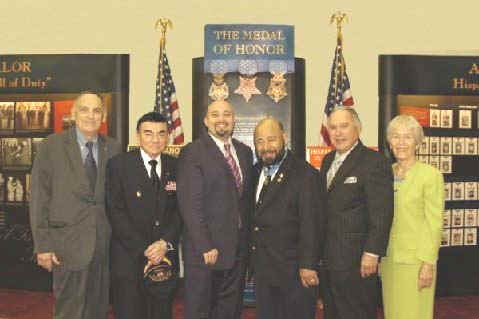
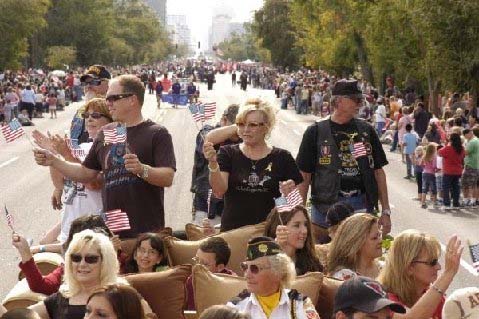
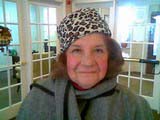 CORPUS
CHRISTI
CORPUS
CHRISTI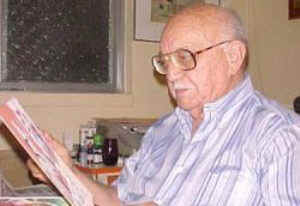 Caracas, 29 Nov.
ABN.- La madrugada de este domingo 29 de noviembre murió el pintor, caricaturista y luchador social Claudio
Cedeño. Coche, la parroquia caraqueña donde vivió durante casi toda su
vida, lo vio partir en silencio.
Caracas, 29 Nov.
ABN.- La madrugada de este domingo 29 de noviembre murió el pintor, caricaturista y luchador social Claudio
Cedeño. Coche, la parroquia caraqueña donde vivió durante casi toda su
vida, lo vio partir en silencio. 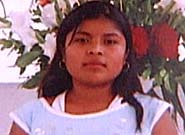
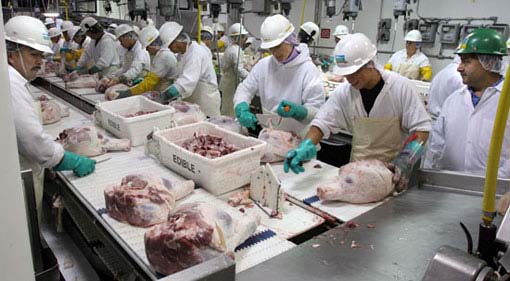
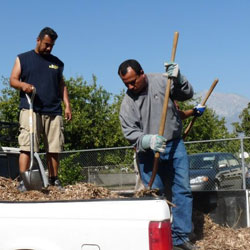 Frequently, there are not many prospects for work. More often than not, toilers with calloused hands and empty lunch coolers shuffle home empty-handed. On those days when an employer is looking for an extra hand, there are other risks. There is no guarantee of workplace safety or of medical care in case of an injury. There's not even any guarantee of payment.
Frequently, there are not many prospects for work. More often than not, toilers with calloused hands and empty lunch coolers shuffle home empty-handed. On those days when an employer is looking for an extra hand, there are other risks. There is no guarantee of workplace safety or of medical care in case of an injury. There's not even any guarantee of payment.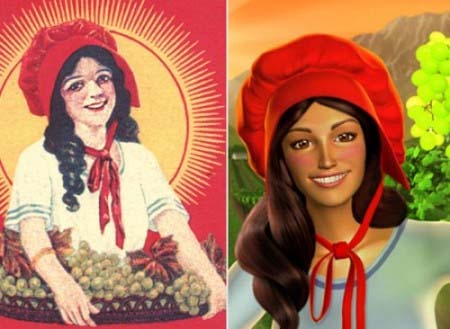
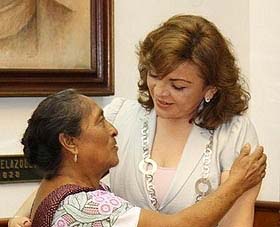

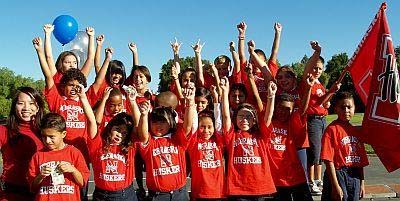 Caryn Kelly s third-graders wear Nebraska Cornhuskers T-shirts during the kick-off event for No Excuses University at Hollingworth Elementary. (Photos by Gina Ward / Courtesy of Rowland Unified)
It looked like a pep rally for the Big 10. Or maybe the Pac 10 conference.
College banners flapped in the breeze as their fight songs bounced off the walls of Hollingworth School in West Covina.
Alumni from USC, UCLA, Northwestern, Harvard and Dartmouth espoused the virtues of college life. Even Boise State was there.
One would think it was a bunch of college recruiters homing in on an elite high school.
But the oldest student here was only 11 years old, many were just beginning their education with kindergarten.
"College begins in kindergarten," insisted teacher Debbie Dauch.
Caryn Kelly s third-graders wear Nebraska Cornhuskers T-shirts during the kick-off event for No Excuses University at Hollingworth Elementary. (Photos by Gina Ward / Courtesy of Rowland Unified)
It looked like a pep rally for the Big 10. Or maybe the Pac 10 conference.
College banners flapped in the breeze as their fight songs bounced off the walls of Hollingworth School in West Covina.
Alumni from USC, UCLA, Northwestern, Harvard and Dartmouth espoused the virtues of college life. Even Boise State was there.
One would think it was a bunch of college recruiters homing in on an elite high school.
But the oldest student here was only 11 years old, many were just beginning their education with kindergarten.
"College begins in kindergarten," insisted teacher Debbie Dauch.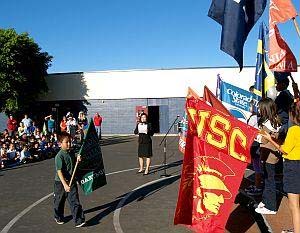 Along with Principal Miriam Kim, the enthusiastic teacher is one of the driving forces behind Hollingworth's admission to No Excuses University.
The Rowland Unified school is the first in the San Gabriel Valley to join the network of schools that actively promotes college the minute
students begin school. "This is a huge privilege and honor to be accepted into the No Excuses University Network. This would not have happened without the support, hard work and dedication from the entire school body," said Principal Kim.
The administrator said the new program motivates students and teachers alike. Parents are also encouraged to begin planning for college.
Guadalupe Diaz of West Covina said her son, Jesus, is excited about college in the fourth grade.
Along with Principal Miriam Kim, the enthusiastic teacher is one of the driving forces behind Hollingworth's admission to No Excuses University.
The Rowland Unified school is the first in the San Gabriel Valley to join the network of schools that actively promotes college the minute
students begin school. "This is a huge privilege and honor to be accepted into the No Excuses University Network. This would not have happened without the support, hard work and dedication from the entire school body," said Principal Kim.
The administrator said the new program motivates students and teachers alike. Parents are also encouraged to begin planning for college.
Guadalupe Diaz of West Covina said her son, Jesus, is excited about college in the fourth grade. 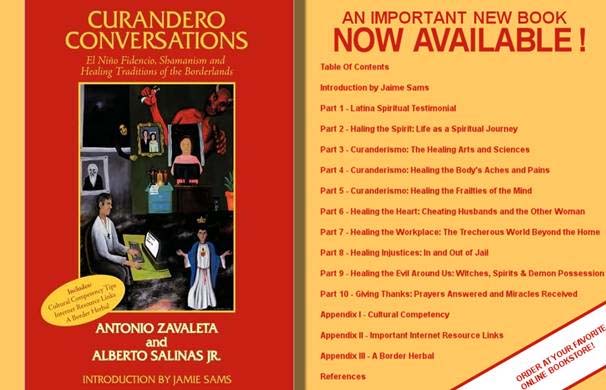
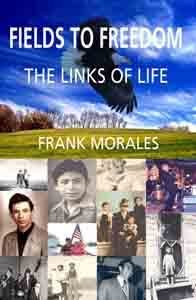 From
the fields of
From
the fields of 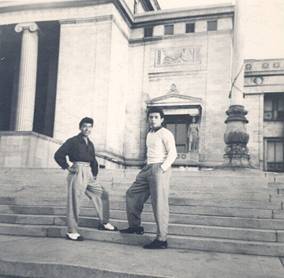
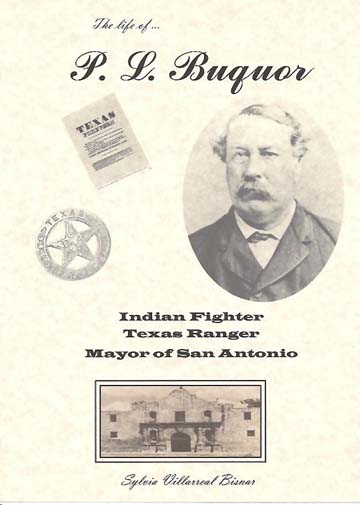 If you want Texas History as lived by one of the unsung heroes of Texas, this is the book for you.
This story introduces his family, his travels, what life was like for a young man in the 1800's, traveling by horse, stagecoach, sleeping on the ground, and the exciting battles in which he participated. This book takes him from a young man of fifteen in 1836 to his death in 1901. As a young man out for adventure, he answered the call to "Save Texas"
If you want Texas History as lived by one of the unsung heroes of Texas, this is the book for you.
This story introduces his family, his travels, what life was like for a young man in the 1800's, traveling by horse, stagecoach, sleeping on the ground, and the exciting battles in which he participated. This book takes him from a young man of fifteen in 1836 to his death in 1901. As a young man out for adventure, he answered the call to "Save Texas"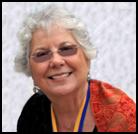 Sylvia
Villarreal Bisnar, a 10th generation San Antonian, was born
on February 14, 1935 in
Sylvia
Villarreal Bisnar, a 10th generation San Antonian, was born
on February 14, 1935 in 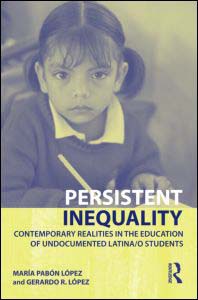 The
children of undocumented migrants in the U.S. are trapped at the
intersection of two systems in crisis: the public education
system and the immigration law system. Based on a long tradition
of scholarship in Latino education and on newer critical race
theory ideas, Persistent Inequality answers burning
questions about how educational policy has to rise to meet the
unique challenges of undocumented students’ lives as well as
those which face nearly all Latinos in the U.S. educational
system. How solid is the Supreme Court precedent, Plyler v.
Doe, that allows undocumented children the opportunity to
attend public K-12 school free of charge? What would happen if
the Supreme Court overruled it? What is the DREAM Act and how
would this proposed federal law affect the lives of undocumented
students? How have immigration raids affected public children
and school administrators? To shed some light on these vital
questions, the authors provide a critical analysis of the
various legal and policy aspects of the U.S. educational system,
asserting that both the legal and educational systems in this
country need to address the living and working conditions of
undocumented Latino students and remove the obstacles to
educational achievement which these students struggle with
daily.
The
children of undocumented migrants in the U.S. are trapped at the
intersection of two systems in crisis: the public education
system and the immigration law system. Based on a long tradition
of scholarship in Latino education and on newer critical race
theory ideas, Persistent Inequality answers burning
questions about how educational policy has to rise to meet the
unique challenges of undocumented students’ lives as well as
those which face nearly all Latinos in the U.S. educational
system. How solid is the Supreme Court precedent, Plyler v.
Doe, that allows undocumented children the opportunity to
attend public K-12 school free of charge? What would happen if
the Supreme Court overruled it? What is the DREAM Act and how
would this proposed federal law affect the lives of undocumented
students? How have immigration raids affected public children
and school administrators? To shed some light on these vital
questions, the authors provide a critical analysis of the
various legal and policy aspects of the U.S. educational system,
asserting that both the legal and educational systems in this
country need to address the living and working conditions of
undocumented Latino students and remove the obstacles to
educational achievement which these students struggle with
daily.
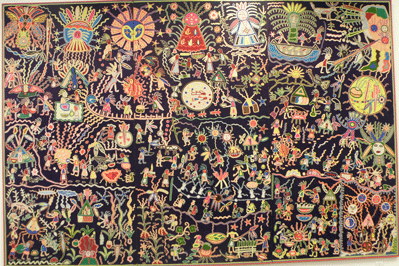
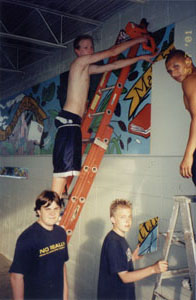 The famous saying: "Si Se Puede" (It can be done) comes alive as this fun
filled introductory workshop focuses on mural design. Set to high-energy
music, two to four teams of 25 participants each compete in the creation of
full size color murals based on the works of such masters as Diego Rivera.
The famous saying: "Si Se Puede" (It can be done) comes alive as this fun
filled introductory workshop focuses on mural design. Set to high-energy
music, two to four teams of 25 participants each compete in the creation of
full size color murals based on the works of such masters as Diego Rivera.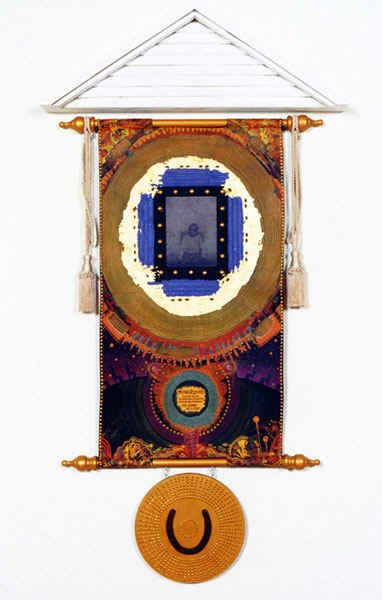 Ex-votos
historically were devotional visual offerings to the Church for a
miraculous cure or for some intervention by a specific religious figure
that prevented harm or death. In 16th century Spain they were
painted directly onto the interior church walls as murals depicting the
miracle. The paintings themselves were called Milagros or
miracles. In 18th and 19th century Mexico they became the source
of income for itinerant artists who depicted in their paintings some
sort of miracle. These artists, often academically untrained,
created their works at the request of families, painting with
inexpensive oils on whatever small scraps of material was convenient and
cheap, most often tin or wood. The works ranged from the
charmingly rustic to the aesthetically profound. The works were then in
turn donated by the family to a nearby church as gratitude for its
intervention. In the 20th century the craft continued but with
less religiosity and more pleas for financial help or for material
goods. In all cases there was always a narrative text painted onto
the surface that described the event and the stated gratitude of the
donor. Frida Kahlo was a modern artist who admired and patterned
some of her work after these forms.
Ex-votos
historically were devotional visual offerings to the Church for a
miraculous cure or for some intervention by a specific religious figure
that prevented harm or death. In 16th century Spain they were
painted directly onto the interior church walls as murals depicting the
miracle. The paintings themselves were called Milagros or
miracles. In 18th and 19th century Mexico they became the source
of income for itinerant artists who depicted in their paintings some
sort of miracle. These artists, often academically untrained,
created their works at the request of families, painting with
inexpensive oils on whatever small scraps of material was convenient and
cheap, most often tin or wood. The works ranged from the
charmingly rustic to the aesthetically profound. The works were then in
turn donated by the family to a nearby church as gratitude for its
intervention. In the 20th century the craft continued but with
less religiosity and more pleas for financial help or for material
goods. In all cases there was always a narrative text painted onto
the surface that described the event and the stated gratitude of the
donor. Frida Kahlo was a modern artist who admired and patterned
some of her work after these forms.
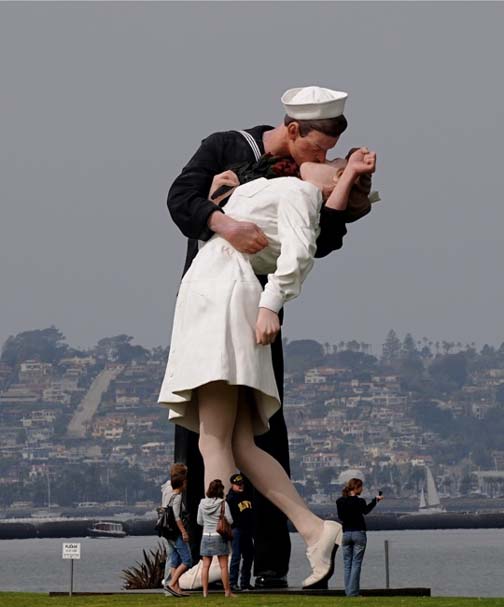
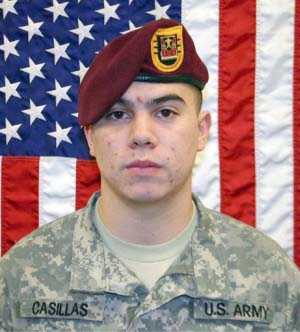
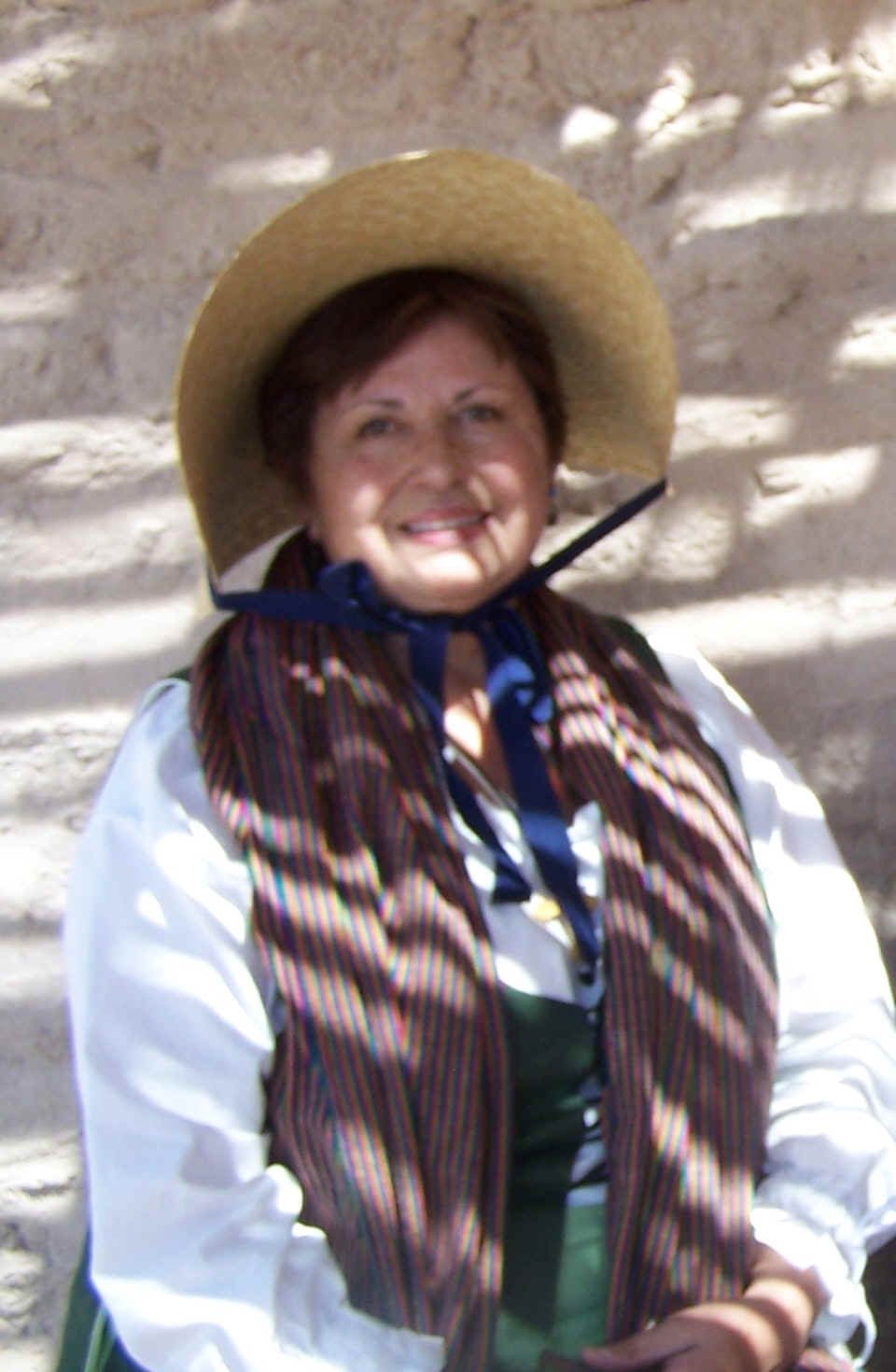 The San Diego SAR Chapter and Casa de España in San Diego Celebrated Spain’s contribution
to the American Revolution held at the Casa de España, in Balboa Park,
Saturday, November 21st,
2009.
The San Diego SAR Chapter and Casa de España in San Diego Celebrated Spain’s contribution
to the American Revolution held at the Casa de España, in Balboa Park,
Saturday, November 21st,
2009. 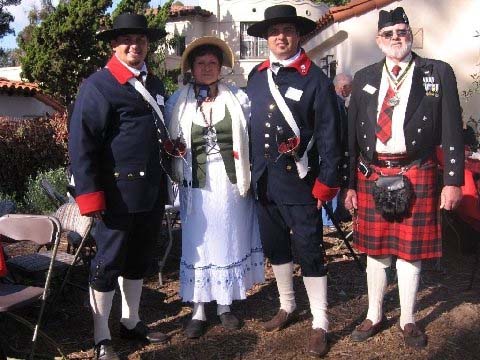
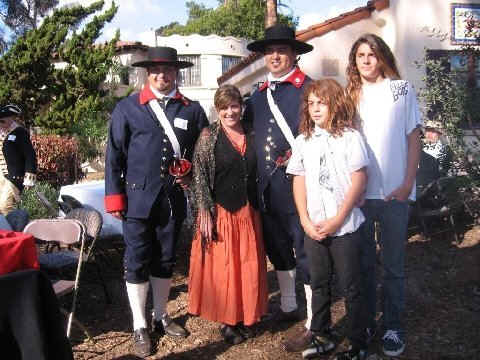 At the conclusion of the formal ceremonies, Casa de España served a delicious meal consisting of a traditional
Spanish salad, paella, and sangria. The paella was prepared by Chef Mr. Jared McCannell who learned
the art of preparing paella while living in Spain. The meal ended with an American favorite – homemade
apple pie and ice cream. Many new friendships developed as the participants
conversed over the meal and enjoyed the beauty of Balboa Park during a sunny afternoon.
At the conclusion of the formal ceremonies, Casa de España served a delicious meal consisting of a traditional
Spanish salad, paella, and sangria. The paella was prepared by Chef Mr. Jared McCannell who learned
the art of preparing paella while living in Spain. The meal ended with an American favorite – homemade
apple pie and ice cream. Many new friendships developed as the participants
conversed over the meal and enjoyed the beauty of Balboa Park during a sunny afternoon.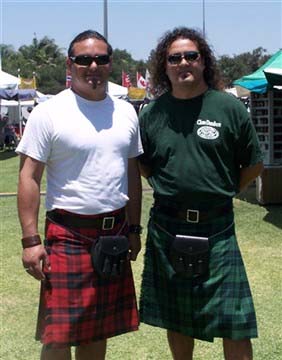 Brothers Christopher and Jeffrey Herrera were inducted into the Sons of the American Revolution Society (SAR). What makes them special is the fact that they are the first to be inducted into SAR based on a Spanish Soldier located in today's state of Arizona. Tucson Presidio 2nd. Lt. Manuel Ortega was their ancestor serving during the years of the American Revolution. Spain was then in Alliance with the American Colonials.
Brothers Christopher and Jeffrey Herrera were inducted into the Sons of the American Revolution Society (SAR). What makes them special is the fact that they are the first to be inducted into SAR based on a Spanish Soldier located in today's state of Arizona. Tucson Presidio 2nd. Lt. Manuel Ortega was their ancestor serving during the years of the American Revolution. Spain was then in Alliance with the American Colonials.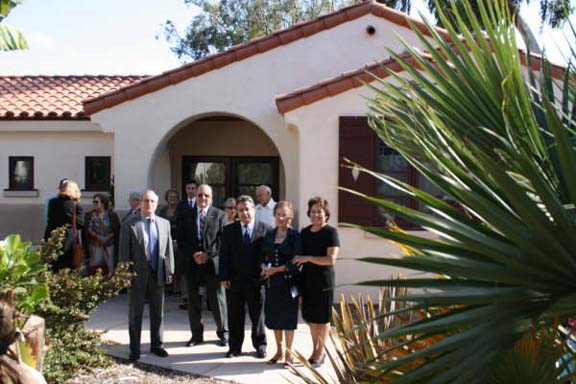
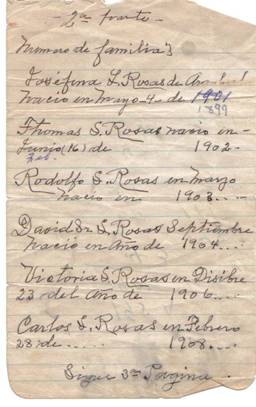
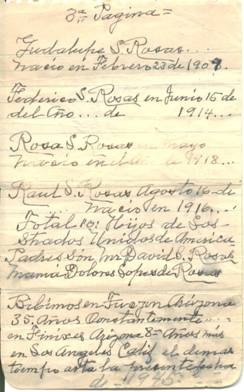
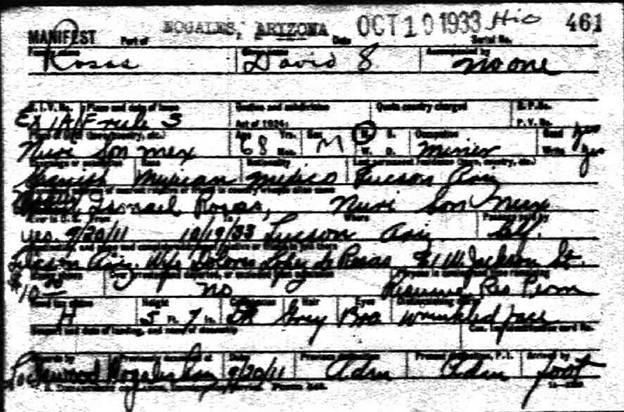

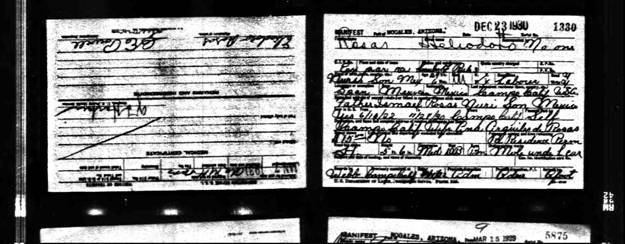
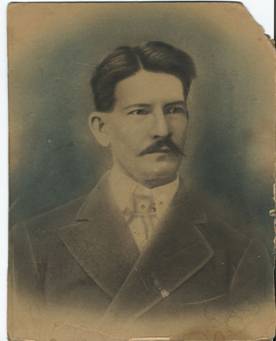
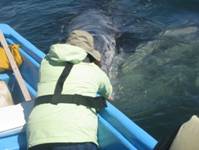
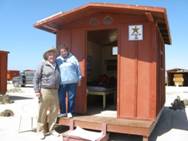
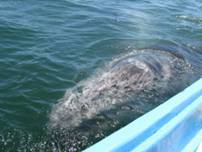
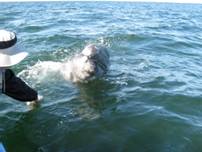
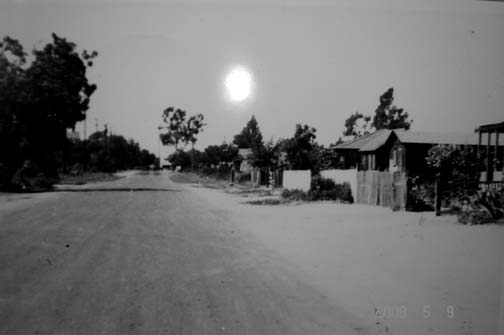
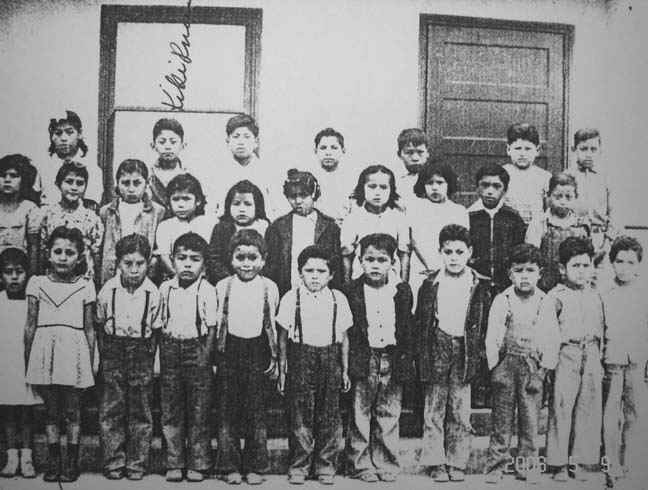
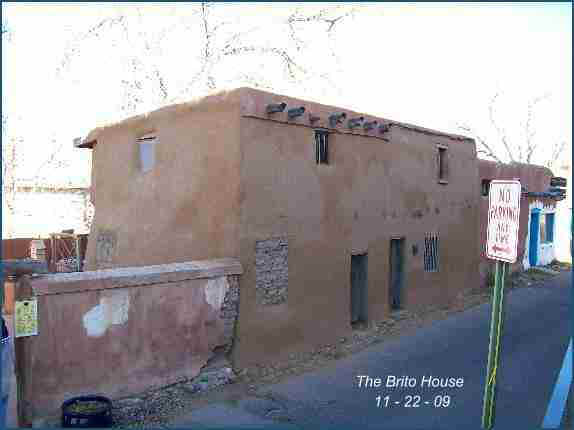

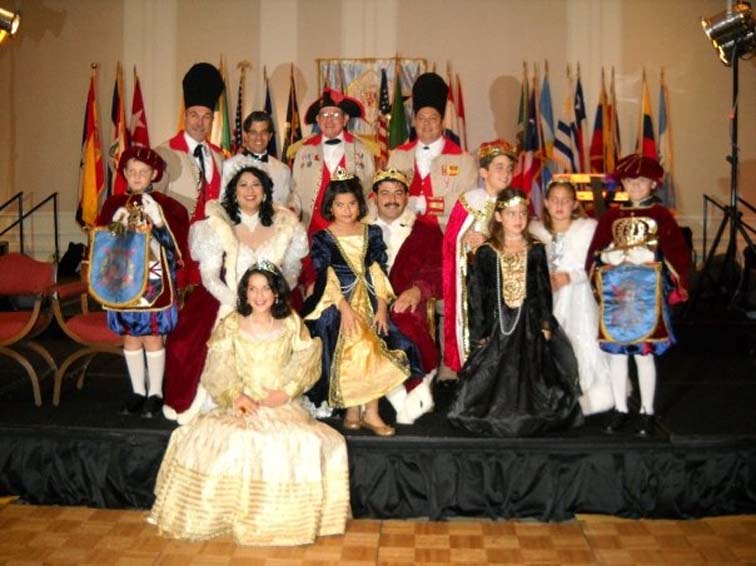
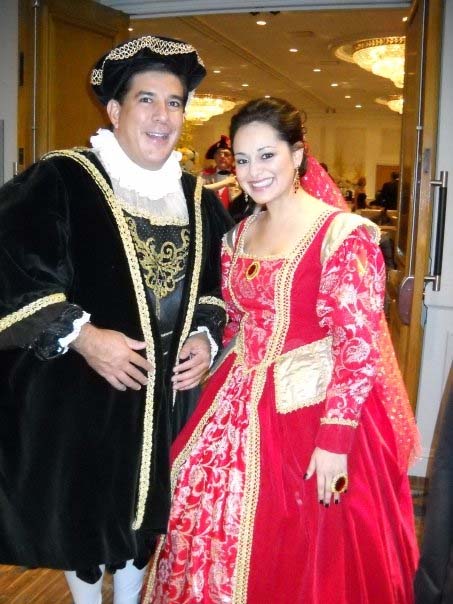 This Gala is a commemoration of Columbus’ discovery of the Americas. It observes all the pageantry resulting from the historical event when Columbus’ venture into the New World was financed through the royal court of Queen Isabella de Castilla and King Fernando de Aragón. In a colorful setting all the flags of the Americas and Spain are presented to the Royal Court by
Padrinos, Sponsors, Benefactors and Underwriters.
This Gala is a commemoration of Columbus’ discovery of the Americas. It observes all the pageantry resulting from the historical event when Columbus’ venture into the New World was financed through the royal court of Queen Isabella de Castilla and King Fernando de Aragón. In a colorful setting all the flags of the Americas and Spain are presented to the Royal Court by
Padrinos, Sponsors, Benefactors and Underwriters.
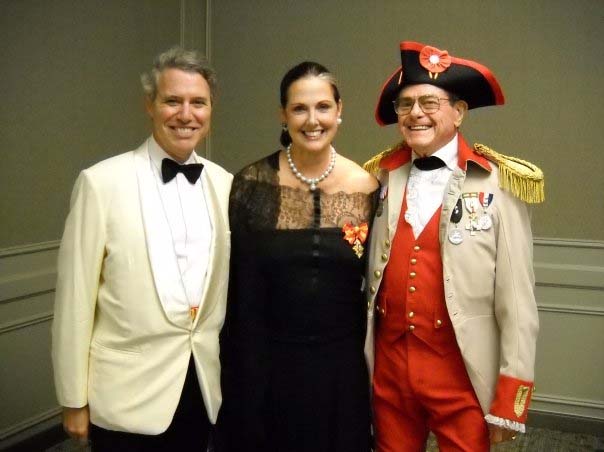
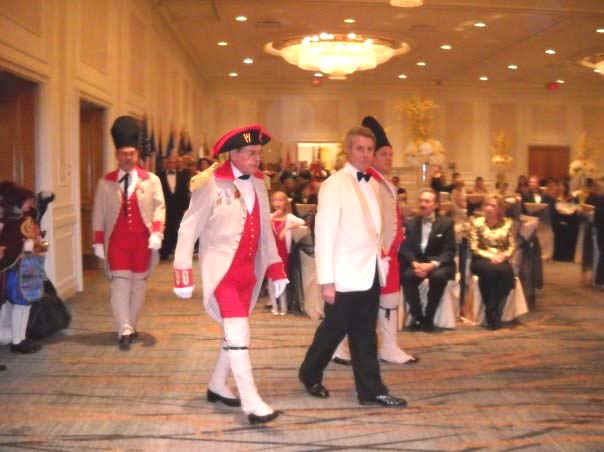
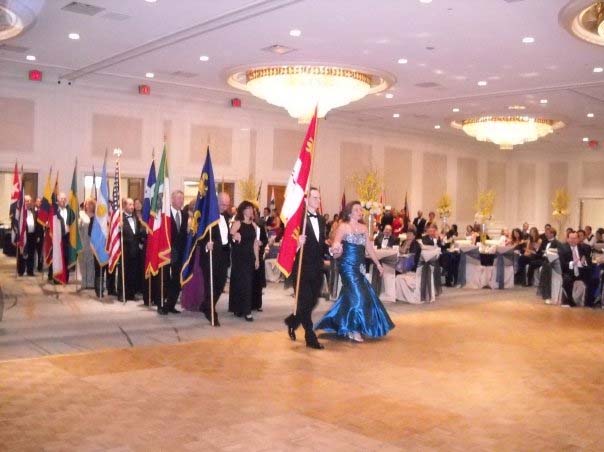
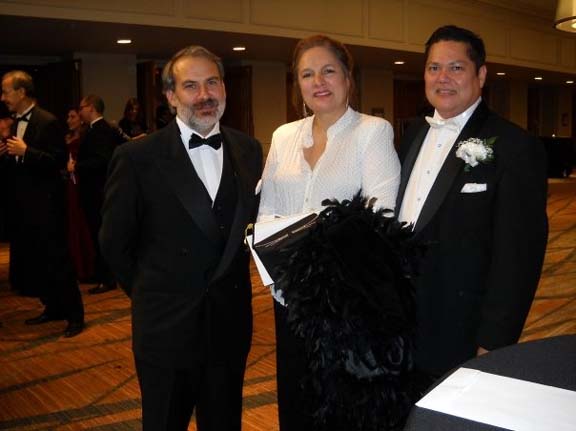
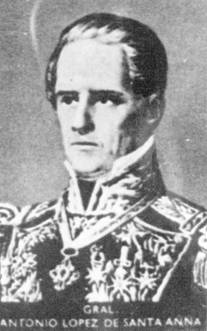
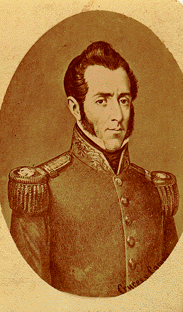
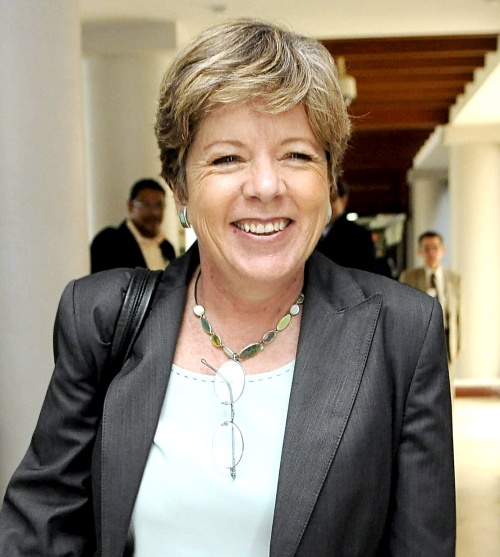
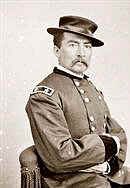 This
being the situation, on May 17, 1865 Major General Philip H. Sheridan
was assigned the command west of the Mississippi and ordered to proceed
to the West without delay. The letter of instruction stated "Your
duty is to restore Texas, and that part of the Louisiana held by the
enemy, to the Union in the shortest practicable time, in a way most
effectual for securing permanent peace."
This
being the situation, on May 17, 1865 Major General Philip H. Sheridan
was assigned the command west of the Mississippi and ordered to proceed
to the West without delay. The letter of instruction stated "Your
duty is to restore Texas, and that part of the Louisiana held by the
enemy, to the Union in the shortest practicable time, in a way most
effectual for securing permanent peace."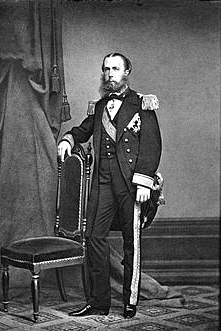 The
French occupation of Mexico had come about through a series of
miscalculations on the part of former Chief Justice of Mexico and then
President, Benito Pablo Juarez. In 1857 and 1858 civil war had broken
out between the liberals led by Juarez and the conservatives. In 1859
the U. S. recognized Juarez as the legitimate President. That year after
issuing a church confiscation decree, Juarez also suspended all payments
to foreign creditors. This was followed by the seizure of the port of
Vera Cruz by France, British, and Spain. The latter two were repaid, but
not France. This provided Louis Napoleon Bonaparte a pretext
The
French occupation of Mexico had come about through a series of
miscalculations on the part of former Chief Justice of Mexico and then
President, Benito Pablo Juarez. In 1857 and 1858 civil war had broken
out between the liberals led by Juarez and the conservatives. In 1859
the U. S. recognized Juarez as the legitimate President. That year after
issuing a church confiscation decree, Juarez also suspended all payments
to foreign creditors. This was followed by the seizure of the port of
Vera Cruz by France, British, and Spain. The latter two were repaid, but
not France. This provided Louis Napoleon Bonaparte a pretext  Juarez's
term as President of the Mexican Republic expired in December 1865, but
due to the circumstances he continued in office by proclamation. This
was despite the Mexican Constitution provision designating the President
of the Supreme Court for the succession.
Juarez's
term as President of the Mexican Republic expired in December 1865, but
due to the circumstances he continued in office by proclamation. This
was despite the Mexican Constitution provision designating the President
of the Supreme Court for the succession. Don
Juan Sánchez publicó un video sobre su familia.
Don
Juan Sánchez publicó un video sobre su familia.
 This year's trip took us to the Amazon River located in the jungles of Brazil; This was awesome trip to say the least. This trip was in celebration of our 50th wedding anniversary though its not until April of 2010. This was a 28-day cruise with Princess Cruise line. We booked it and we were down in the 6th deck so we upgraded to the 7th deck. Much to our surprise when we arrived in Florida to board the ship, we were upgraded to the 8th deck to a mini-suite which was absolutely delightful.
This year's trip took us to the Amazon River located in the jungles of Brazil; This was awesome trip to say the least. This trip was in celebration of our 50th wedding anniversary though its not until April of 2010. This was a 28-day cruise with Princess Cruise line. We booked it and we were down in the 6th deck so we upgraded to the 7th deck. Much to our surprise when we arrived in Florida to board the ship, we were upgraded to the 8th deck to a mini-suite which was absolutely delightful. 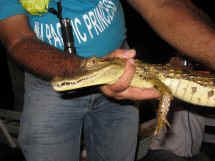 along the River were all on stilts and some were floating homes (Something like motor homes moving from area to area). We saw monkeys everywhere, beautiful Macaws, Parrots, Egrets flying all over and other wildlife I don't have names for. We continued on the canoe to January Lake where lives "Pink" dolphins, yes pink..........they eat salmon and that is why they are pink. Remember this is an 11 hour tour.......it was dinner time so we stopped along the river bank to a "restaurant/hotel??" called the Amazon Village had a delicious buffet dinner (no electricity just lanterns). By now its 7 pm and off we go on our canoe headed back to the ship (Four hours on the river to get back to the ship). We were looking for Caiman (Alligators) in the dark, our tour guide was able to pick one right out of the river,
(photo above). We got to pet him but refused to hold this Caiman. What an experience.
along the River were all on stilts and some were floating homes (Something like motor homes moving from area to area). We saw monkeys everywhere, beautiful Macaws, Parrots, Egrets flying all over and other wildlife I don't have names for. We continued on the canoe to January Lake where lives "Pink" dolphins, yes pink..........they eat salmon and that is why they are pink. Remember this is an 11 hour tour.......it was dinner time so we stopped along the river bank to a "restaurant/hotel??" called the Amazon Village had a delicious buffet dinner (no electricity just lanterns). By now its 7 pm and off we go on our canoe headed back to the ship (Four hours on the river to get back to the ship). We were looking for Caiman (Alligators) in the dark, our tour guide was able to pick one right out of the river,
(photo above). We got to pet him but refused to hold this Caiman. What an experience.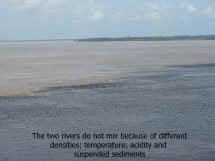

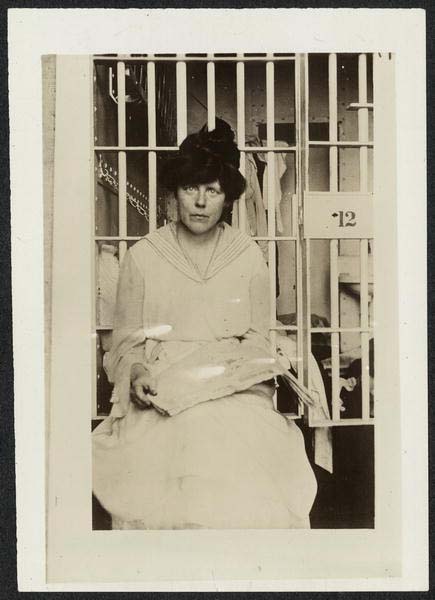
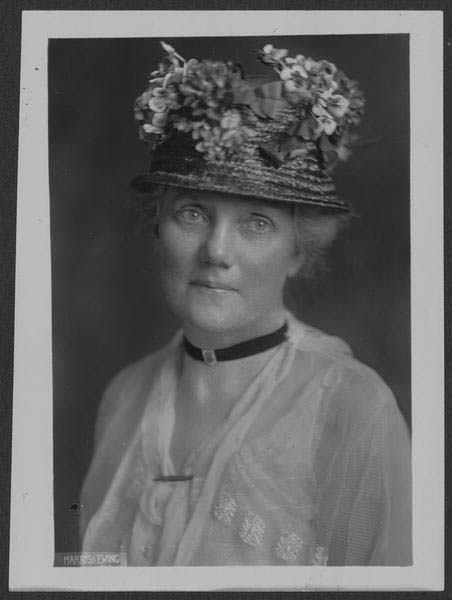
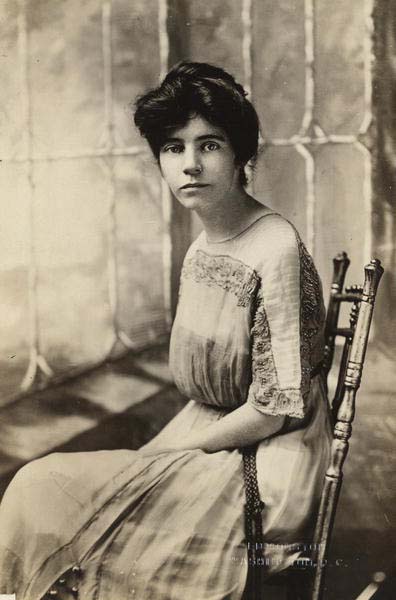 Thus unfolded the 'Night of Terror' on Nov. 15, 1917, when the warden at the Occoquan Workhouse in Virginia ordered his
guards to teach a lesson to the suffragists imprisoned there because they dared to picket Woodrow Wilson's White House for the right
to vote.
Thus unfolded the 'Night of Terror' on Nov. 15, 1917, when the warden at the Occoquan Workhouse in Virginia ordered his
guards to teach a lesson to the suffragists imprisoned there because they dared to picket Woodrow Wilson's White House for the right
to vote.